
Tracing the Blue Domes of Samarkand: My Journey Through Uzbekistan’s Timeless Silk Road City
Steeped in legend and laced with history, Samarkand remains one of the Silk Road’s most captivating cities with its grand madrasahs, vivid bazaars, and centuries-old craftsmanship. Since AirAsia X now connects Malaysia directly to Uzbekistan, visiting this UNESCO-listed city of blue domes has become easier than ever.
I had always imagined Samarkand as a faraway, ancient name from a history book, a place of caravans and conquerors, where spices and silk once crossed continents, and now replete with ruins and vestiges of the past. But when I arrived, I realised this wasn’t just some forgotten chapters in that history book – Samarkand is very much alive and even thriving! The domes still glimmer under the sun, the call to prayer still echoes across rooftops, and the warmth of the people makes you feel like you’ve been here before.
Arriving into the City of Legends
Getting here was easier than expected. I flew on AirAsia X, which now directly connects Malaysia to Uzbekistan, making this once-remote Silk Road destination far more accessible to Southeast Asian travellers. The flight was comfortable, the crew friendly, and landing directly in Tashkent felt effortless. From there, it was a scenic two-hour train ride to Samarkand aboard the Afrosiyob, Uzbekistan’s high-speed rail service. Watching the desert roll by and the distant mountains fade into view felt like the beginning of a true journey.
When I finally stepped out of the station, Samarkand greeted me with golden sunlight and a gentle breeze that carried the scent of baked bread and apricots. My first stop was one of the city’s most important landmarks: the final resting place of the great conqueror, Amir Timur.
Gur-e Amir – the Resting Place of an Emperor
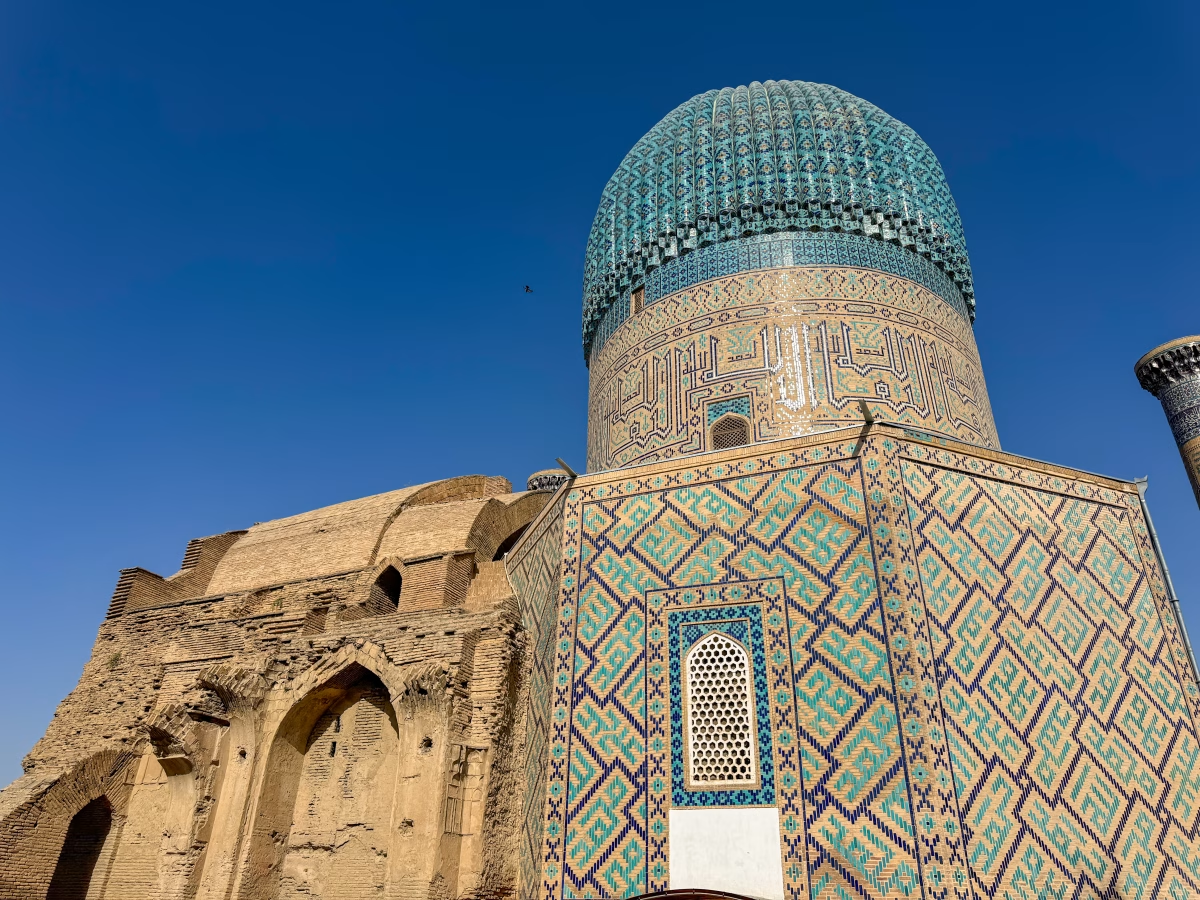
Gur-e Amir, or “Tomb of the King,” stands as both monument and memory. Built in 1403 by Timur for his grandson Muhammad Sultan, it became his own resting place after he died in 1405. The dome, a perfect sphere of turquoise and blue, gleamed like a jewel under the afternoon light.
Inside, the mausoleum was quiet, the marble floor cool beneath my feet. A local guide shared stories of Timur’s empire and the legend of his curse, that opening his tomb would bring disaster. It’s said that Soviet archaeologists did just that in 1941, the day before Nazi Germany invaded the USSR. Whether or not you believe in omens, standing there felt powerful as if time itself paused in respect.
The site is open daily, and tickets usually range from 50,000–100,000 UZS. Visit early or late in the day for soft light and fewer crowds, and if you can, linger until evening when the dome glows softly against the Samarkand sky.
Registan Square – The Beating Heart of Samarkand

Every city has a centre, but few are as spectacular as Registan Square. Surrounded by three grand fomer madrasahs, namely Ulugh Beg, Sher-Dor, and Tillya-Kori, this spot is the perfect starting point for understanding Samarkand’s character.
The symmetry, the scale, and the craftsmanship of this square are astonishing. The Ulugh Beg Madrasah reflects the ruler’s passion for science, its facade adorned with star patterns symbolising his astronomical work. Across from it, the Sher-Dor Madrasah displays tigers chasing deer, which are bold, golden, and unusual in Islamic art. Completing the trio, the Tillya-Kori Madrasah glows with an interior so richly gilded it seems to radiate its own light.
Wandering between these masterpieces, I stopped to admire artisans selling handmade ceramics, embroidered scarves, and small mosaic boxes. The square feels different at every hour. It can be calm in the morning, lively by day, and utterly magical at night when it is illuminated. Entrance is around 100,000 UZS (https://www.iticket.uz/en/venues/registan-square), and the evening light show is worth staying for.
Bibi Khanum Mosque – The Queen’s Monument
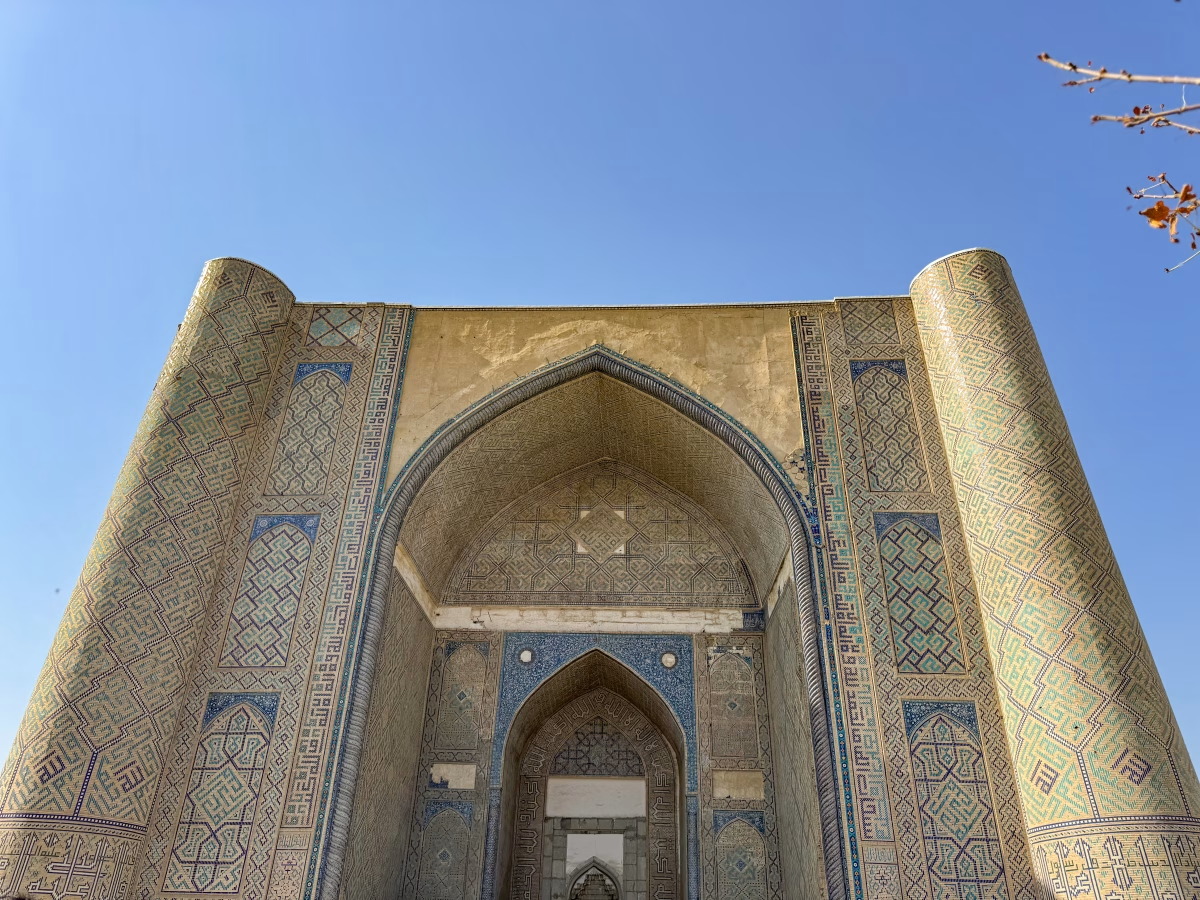
Just a short walk from Registan lies the magnificent Bibi Khanum Mosque, built by his beloved wife for Amir Timur in honour of him after returning from his Indian campaign. Even partially restored, the mosque still looks breathtaking. The monumental archways and patterned tiles make you feel small in the nicest possible way.
A guide told me the story behind the mosque: it’s a tale of love, jealousy, and power. While Timur was away, Bibi Khanum commissioned the mosque as a gift, but the architect fell in love with her. When he dared to kiss her, Timur’s wrath was swift, and legend says that was when the veil became mandatory in his empire.
Entry costs about 30,000–75,000 UZS, and mornings are best for photography, when the sunlight paints the domes in shades of turquoise and gold.
Siyob Bazaar – The Heartbeat of Local Life
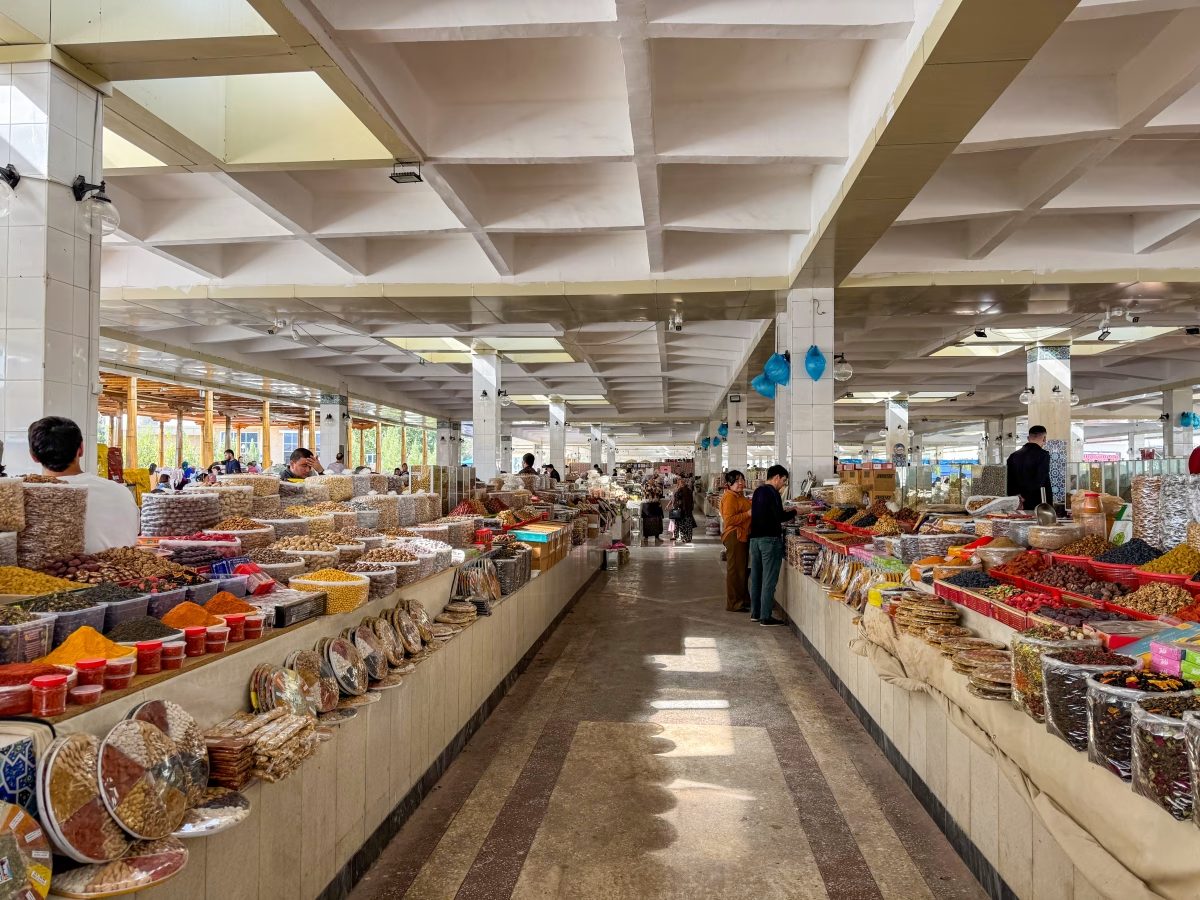
Next to Bibi Khanum sits Siyob Bazaar, Samarkand’s main marketplace. The moment I stepped inside, the aroma of spices, nuts, and freshly baked non (staple bread) filled the air. It’s busy, colourful, and wonderfully chaotic, the kind of place where you instantly feel part of the rhythm of the city.
Vendors called out greetings as I passed pyramids of dried apricots, saffron, pistachios, and halva. I couldn’t resist buying a loaf of non, still warm from the oven, and a handful of sweet figs for the journey. In one corner, I watched women arranging herbs while the men weighing mounds of almonds on old brass scales.
If you want to see Samarkand beyond its monuments, come here. Bargaining is expected but friendly, and even if you don’t buy anything, the energy of the bazaar stays with you.
Shah-i-Zinda – The Street of the Living King

A few kilometres away lies Shah-i-Zinda, one of Samarkand’s most sacred sites. The name means “The Living King,” and legend says it’s where Qusam ibn Abbas, cousin of the Prophet Muhammad, is buried.
This necropolis stretches like a corridor of blue, each mausoleum more intricate than the last, covered in turquoise, navy, and white tilework. Climbing the long staircase to the top, I passed families praying, students sketching, and travellers quietly taking it all in.
This is still an active place of reflection, so dress modestly. Mornings are quieter, and the soft light brings out the depth of colour in the tiles.
Ulugh Beg Observatory – Measuring the Heavens
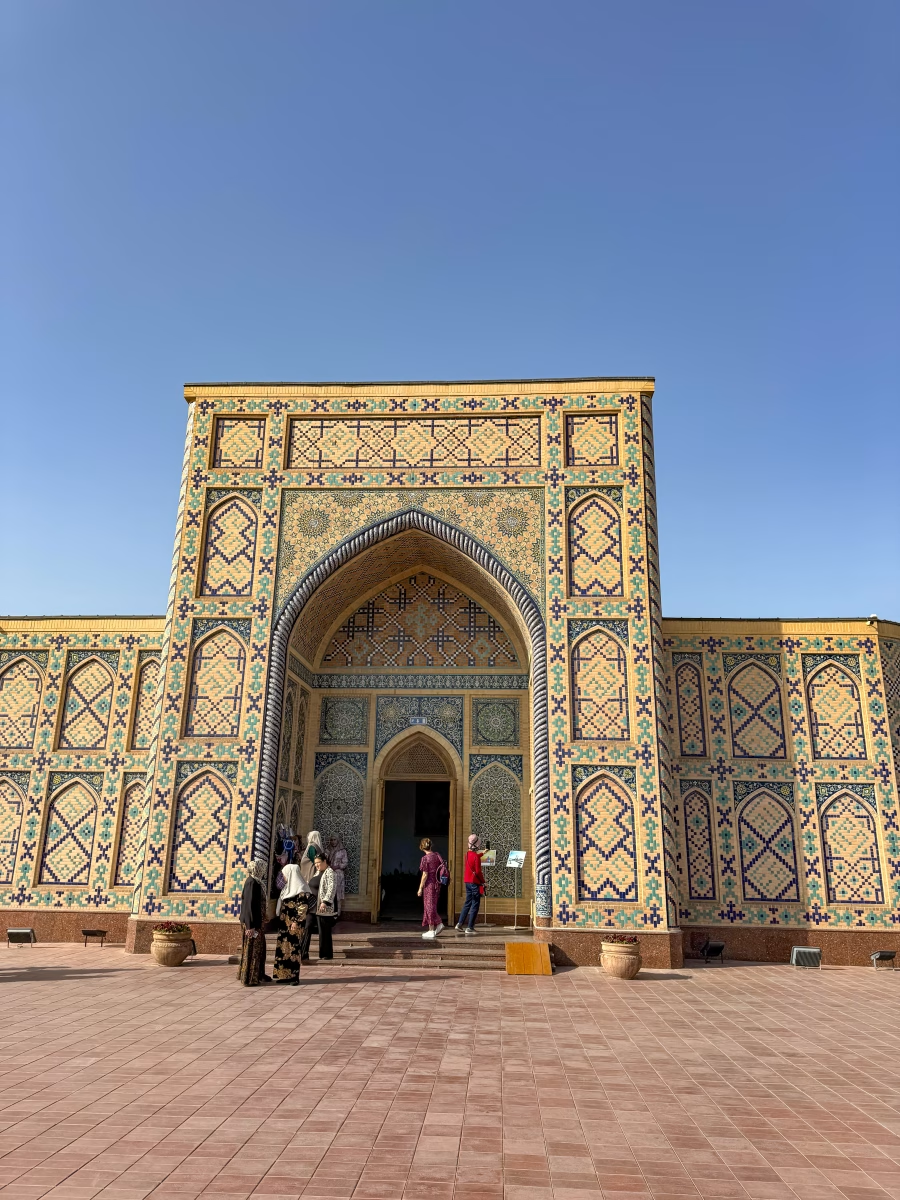

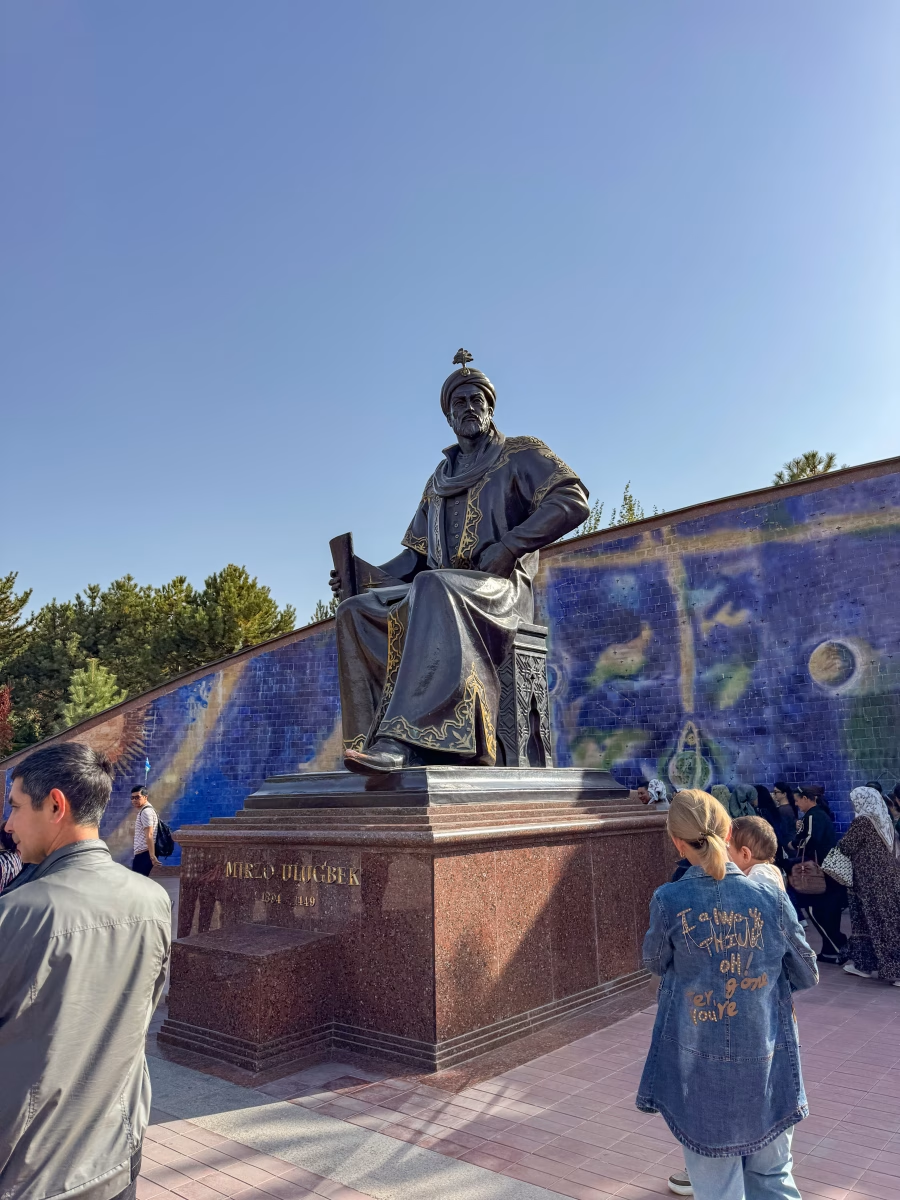
High on a hill overlooking the city sits the Ulugh Beg Observatory, built in the 1420s by the scholar-king himself. It was one of the most advanced observatories in the world during its time, centuries before telescopes started to exist.
Standing by the remains of the giant sextant, I imagined Ulugh Beg and his astronomers mapping the stars, driven by curiosity and intellect rather than conquest. The adjacent museum displays his Zij-i-Sultani star catalogue, remarkably accurate for its time.
It’s a peaceful, thought-provoking stop, especially if you’ve already visited Registan and seen Ulugh Beg’s name there. His love for learning still defines Samarkand’s spirit today.
St. Daniel Mausoleum – Faith and Harmony
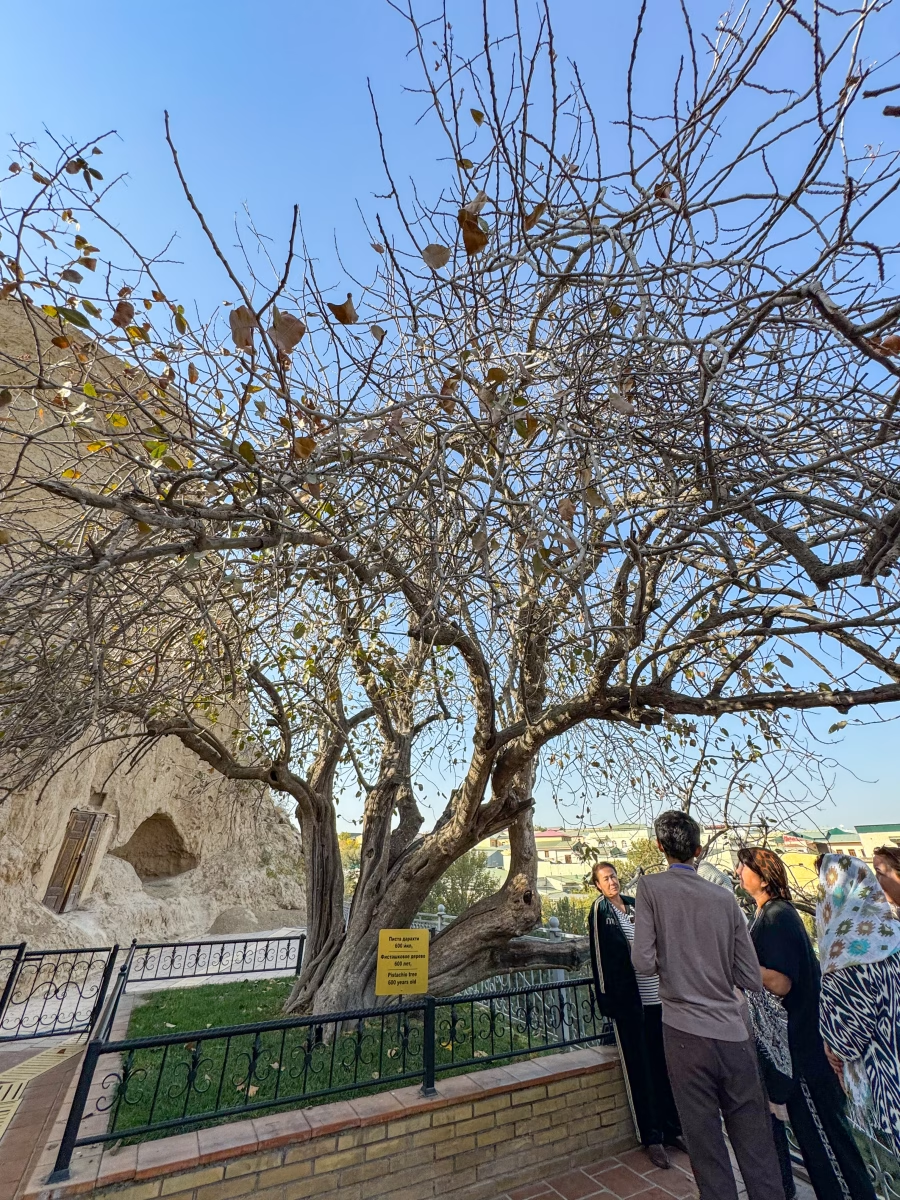
Beyond the city’s edge lies St. Daniel Mausoleum, a quiet sanctuary where Muslims, Christians, and Jews all come to pay their respects. The sarcophagus, an astonishing 18 metres long, is said to grow a little each year.
A clear spring flows beside the shrine, and locals believe its water brings good health. Standing under the shade of mulberry trees, I felt an incredible sense of peace, reminding me that Samarkand has always been a crossroads not just of trade, but of faith and understanding.
Meros Paper Mill – Crafting Tradition by Hand

In Konigil Village, about 20 minutes from the city, the Meros Paper Mill preserves an ancient craft once famous across Asia. Here, artisans make paper from mulberry bark using the same water-powered method used in the 8th century.
I joined a short demonstration, stirring the pulp and pressing a sheet myself. It dried into a soft, cream-coloured paper, surprisingly strong and beautiful. For a small entrance fee (about 10,000 UZS), visitors can tour the workshop and purchase notebooks or artwork made from the handmade paper. Each piece serves as a link to Samarkand’s creative heritage.
Silk Road Samarkand – A Modern Cultural Hub
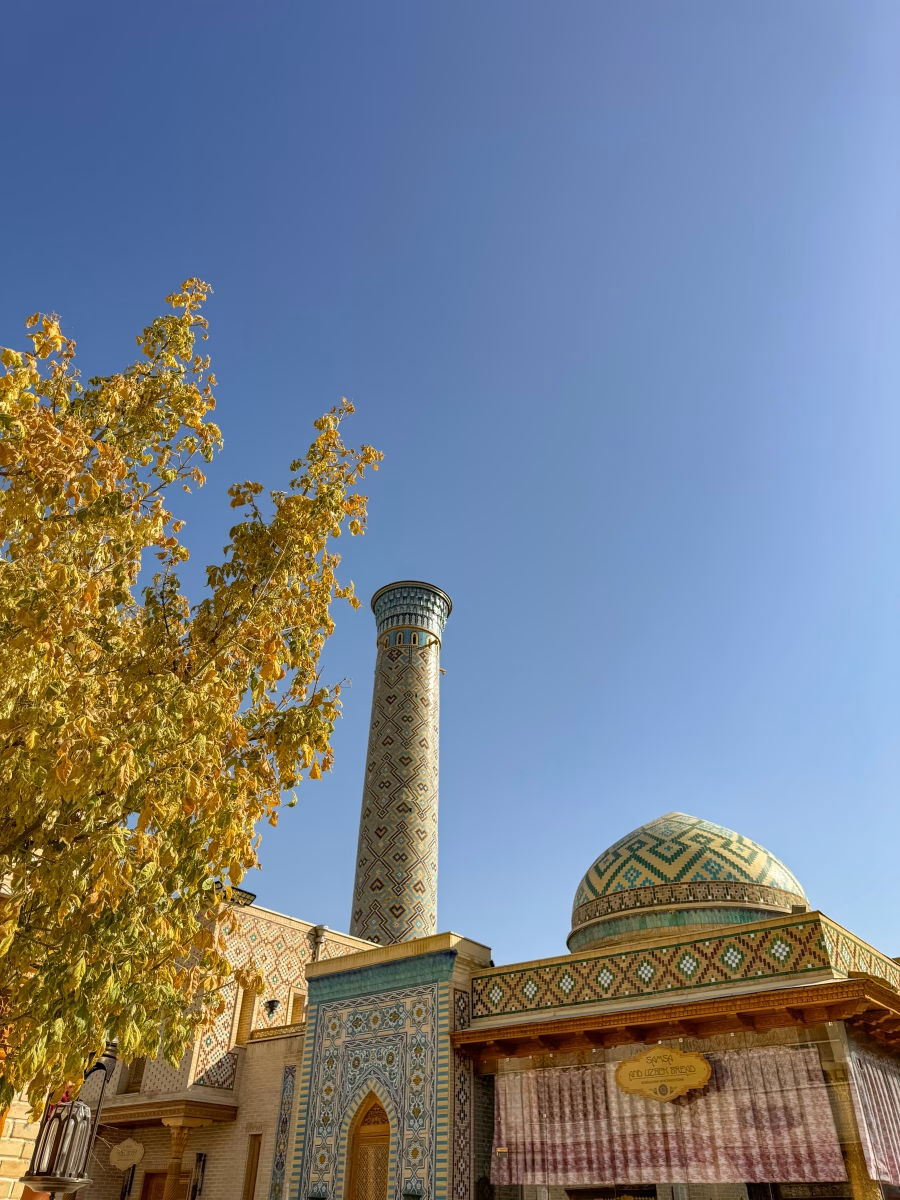
Samarkand isn’t only about the past. The newly built Silk Road Samarkand Touristic Centre shows how the city is embracing modern tourism while celebrating tradition. The complex features luxury hotels, restaurants, and a canal for rowing and evening walks.
Its highlight is The Eternal City, an open-air cultural park where artisans and performers bring Uzbekistan’s history to life through crafts, music, and food. It is a lively contrast to the heritage landmarks that I visited earlier, proving that Samarkand continues to evolve with the times.
The Silk Carpets of Samarkand and Bukhara
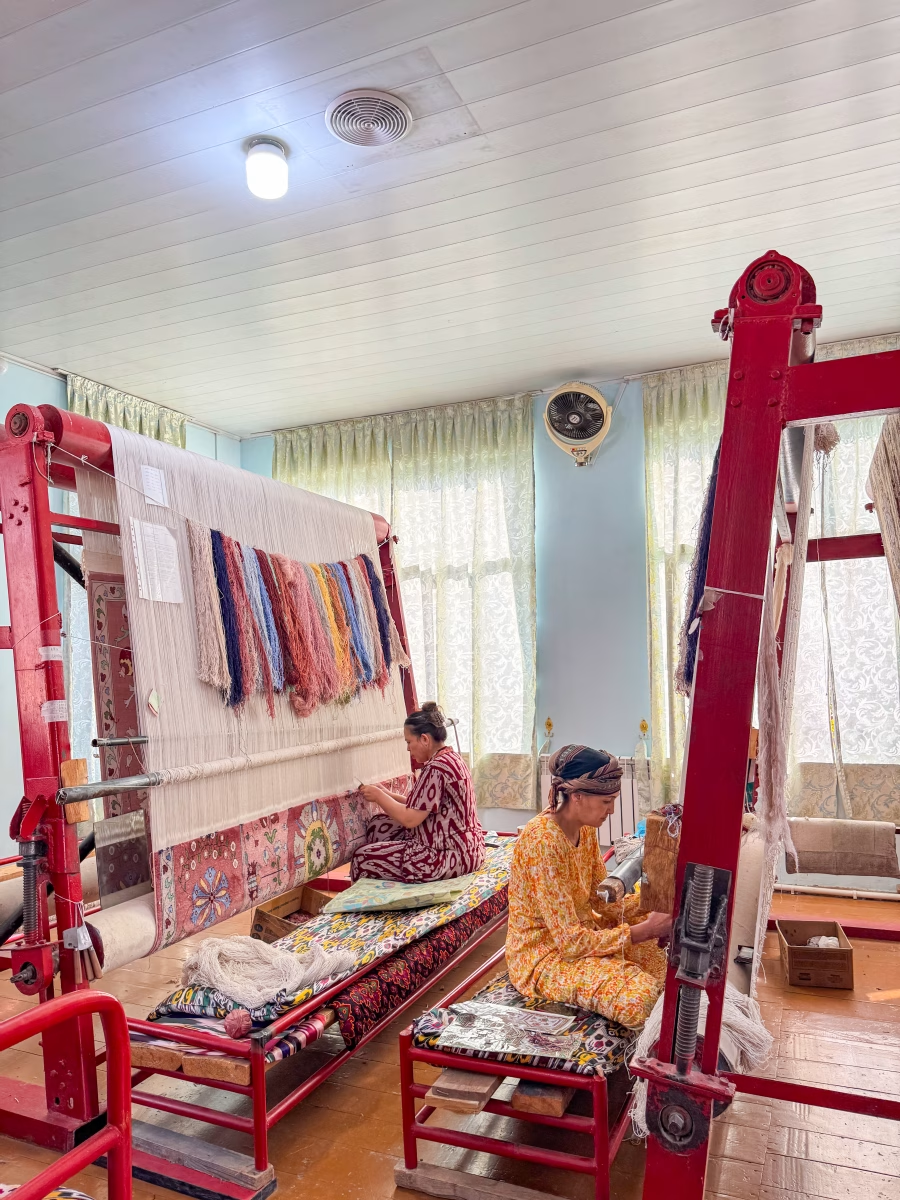
Before leaving, I stopped at a local silk carpet factory, where women sat weaving brilliant patterns by hand. Each carpet can take months to finish, with natural dyes and silk threads that catch the light differently, depending on your angle.
Guided tours explain every step of the process, from boiling cocoons to knotting the intricate designs. The genuine carpets come with a certificate for export, and even if you don’t buy one, watching the craft in action alone is mesmerising.
Leaving Samarkand
On my final evening, I returned to Registan Square. The sky turned deep orange, and the blue domes began to glow under the city lights. Around me, families strolled, couples took photos, and children played.
As I looked up at the madrasahs one last time, I realised that Samarkand’s beauty isn’t just in its monuments, but in the way it connects people from past and present, traveller and local. Flying home with AirAsia X, I felt grateful that this once-distant dream was now just a flight away.
Gaya Travel Magazine team members express our heartfelt gratitude to AirAsia for making the writer’s trip to Samarkand possible and smooth-sailing.






Leave a Reply